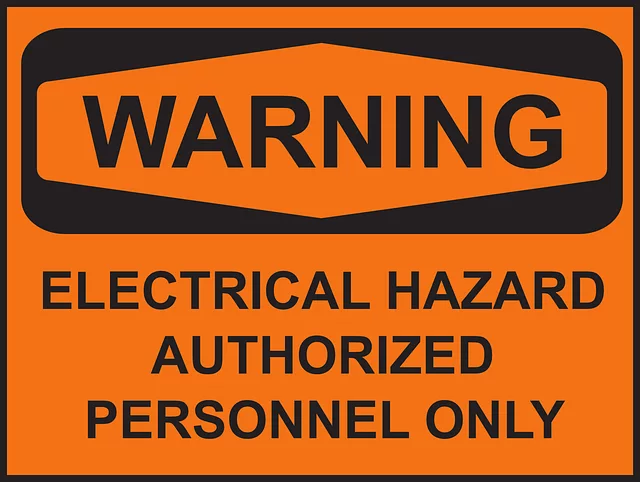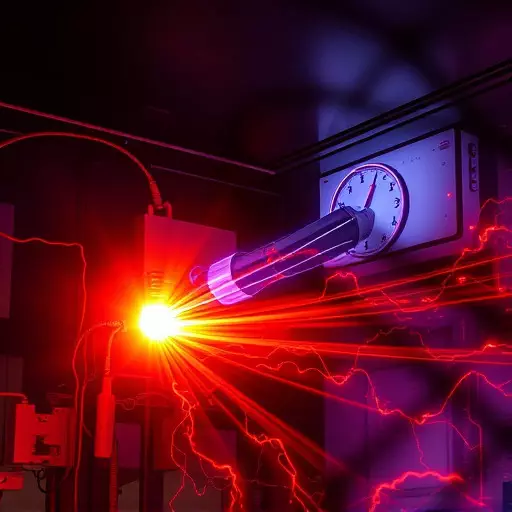Arc flash hazards pose significant risks in industrial and commercial settings, driven by sparks or discharges between conductive surfaces from equipment like switchgear and transformers. An arc flash hazard analysis is a critical process that evaluates system design, operation, and maintenance to identify equipment-specific risks, enabling compliance with standards like NFPA 70E and preventing catastrophic failures. By identifying high-risk areas, assessing equipment ratings, and employing protective measures (PPE, advanced controls), this proactive approach prioritizes worker safety and reduces arc flash risks. Regular updates ensure ongoing electrical safety compliance. Engineering plays a vital role in conducting these analyses, designing safety systems, educating personnel, and implementing strategies like proper grounding, overcurrent protection, and clear labeling to achieve substantial arc flash risk reduction. Arc Flash Engineering Services enhance safety across various industries through tailored hazard analyses, showcasing improved measures in industrial plants and data centers.
Arc flash engineering services are vital in today’s industrial landscape, where electrical systems drive operations. This comprehensive guide explores arc flash hazards—their definition and common sources—and highlights their significant impact on workplace safety. We delve into the critical importance of arc flash hazard analysis, strategies for risk reduction, and the pivotal role engineering plays in enhancing electrical safety compliance. Through best practices and real-world case studies, this article offers insights to mitigate risks and ensure safer industrial environments.
- Understanding Arc Flash Hazards: Definition and Sources
- The Importance of Arc Flash Hazard Analysis
- Identifying High-Risk Areas for Arc Flash
- Strategies for Arc Flash Risk Reduction in Industrial Settings
- Role of Engineering in Enhancing Electrical Safety Compliance
- Best Practices for Implementing Arc Flash Mitigation Measures
- Case Studies: Successful Arc Flash Engineering Projects
Understanding Arc Flash Hazards: Definition and Sources
Arc flash hazards are a significant concern in industrial and commercial settings, where electrical systems are prevalent. This phenomenon occurs when an arc—a spark or discharge of electricity—is created between two conductive surfaces, often due to a fault or improper clearance. The resulting arc can produce intense heat, light, and pressure waves, posing severe risks to personnel and equipment.
These hazards can be found in various sources within electrical systems, including switchgear, transformers, motor controls, and panel boards. Proper identification of these potential hazards is crucial for implementing effective risk reduction strategies. An arc flash hazard analysis involves assessing the system’s design, operation, and maintenance practices to determine the level of risk associated with each piece of equipment. This process is essential in achieving electrical safety compliance and mitigating potential catastrophic failures.
The Importance of Arc Flash Hazard Analysis
Arc flash hazard analysis is a critical component in ensuring electrical safety compliance for any industrial facility. By meticulously studying and understanding potential arc flash risks, engineers can implement effective strategies to mitigate these dangers. This process involves identifying high-risk areas, assessing equipment ratings, and determining appropriate protective measures. It’s not just about adhering to safety standards; it’s about preventing catastrophic failures that could lead to severe injuries or fatalities.
The analysis goes beyond simple compliance with regulations like NFPA 70E. It empowers facilities to implement targeted arc flash risk reduction strategies, enhancing overall electrical safety. By prioritizing areas of highest risk, implementing proper personal protective equipment (PPE), and using advanced control technologies, facilities can create a safer working environment for their employees. This proactive approach not only protects the workforce but also ensures the smooth operation of critical infrastructure.
Identifying High-Risk Areas for Arc Flash
Identifying high-risk areas for arc flash is a critical step in ensuring electrical safety compliance and minimizing potential hazards. An arc flash hazard analysis involves thorough inspection and assessment of an electrical system to pinpoint locations where the risk of an arc flash event is highest. These areas often include places with high voltage, exposed conductive components, or poor clearance between live parts and accessible equipment. By analyzing factors such as equipment design, maintenance records, and operational procedures, engineers can pinpoint specific points of concern.
Understanding these high-risk zones enables the implementation of targeted arc flash risk reduction strategies. This may involve upgrades to protective devices, improvements in grounding systems, or the installation of advanced safety interlocks. Regular reviews and updates to these analyses are essential, as electrical systems evolve over time, introducing new variables that can impact arc flash potential. Such proactive measures not only enhance overall electrical safety but also help businesses maintain regulatory compliance.
Strategies for Arc Flash Risk Reduction in Industrial Settings
In industrial settings, managing and mitigating arc flash hazards is paramount to ensuring electrical safety compliance. The first step in this process involves conducting a thorough arc flash hazard analysis. This meticulous assessment identifies potential sources of arcs and sparks within an electrical system, evaluates their energy release potential, and determines the likelihood of occurrence. Armed with these insights, facility managers can implement targeted strategies for arc flash risk reduction.
These strategies encompass a range of measures from equipment design and guard shielding to operational protocols and personal protective equipment (PPE). For instance, upgrading to arc-resistant electrical components, installing proper grounding systems, and enforcing strict lockout/tagout procedures during maintenance can significantly minimize the risks associated with arc flashes. Additionally, training employees on arc flash prevention and response procedures is crucial for maintaining a proactive safety culture in industrial environments.
Role of Engineering in Enhancing Electrical Safety Compliance
Engineering plays a pivotal role in enhancing electrical safety compliance by meticulously conducting arc flash hazard analyses. This involves assessing and identifying potential risks associated with electrical systems, such as arcing events that can result in severe injuries or damage. By performing comprehensive risk assessments, engineers can pinpoint vulnerable areas and implement tailored strategies to mitigate the arc flash hazard.
Through these efforts, engineering services contribute significantly to arc flash risk reduction. They design and implement safety systems like proper grounding, overcurrent protection devices, and enclosure designs that minimize the impact of arcing events. Moreover, they educate personnel on safe work practices and provide regular audits to ensure ongoing adherence to electrical safety standards, ultimately fostering a culture of safety in industrial settings.
Best Practices for Implementing Arc Flash Mitigation Measures
When implementing arc flash mitigation measures, a systematic approach is key. Start by conducting a thorough arc flash hazard analysis to identify potential risks within your electrical systems. This involves assessing equipment, load characteristics, and available fault currents. Once hazards are identified, prioritize risks based on severity and likelihood of occurrence.
Next, focus on electrical safety compliance. Implement arc flash protective devices such as circuit breakers with appropriate ratings and overcurrent protection. Ensure proper labeling and signage to warn workers about potential dangers. Additionally, consider engineering controls like safe work practices, personal protective equipment (PPE), and system design modifications to minimize exposure to arc flash hazards and achieve arc flash risk reduction.
Case Studies: Successful Arc Flash Engineering Projects
In the realm of electrical safety, Arc Flash Engineering Services have proven to be a game-changer for numerous industries. Case studies illustrate successful projects where thorough arc flash hazard analyses were conducted, highlighting potential risks and implementing effective risk reduction strategies. These analyses go beyond simple compliance with electrical safety standards; they delve into understanding unique facility layouts, equipment vulnerabilities, and operational procedures to tailor solutions.
The resulting improvements in arc flash risk reduction have been remarkable. From industrial plants to data centers, these projects have demonstrated significant enhancements in electrical safety. By employing advanced engineering techniques, each case study showcases a successful transformation, ensuring that folks working with high-risk electrical systems are better protected against the dangerous consequences of arc flashes.


